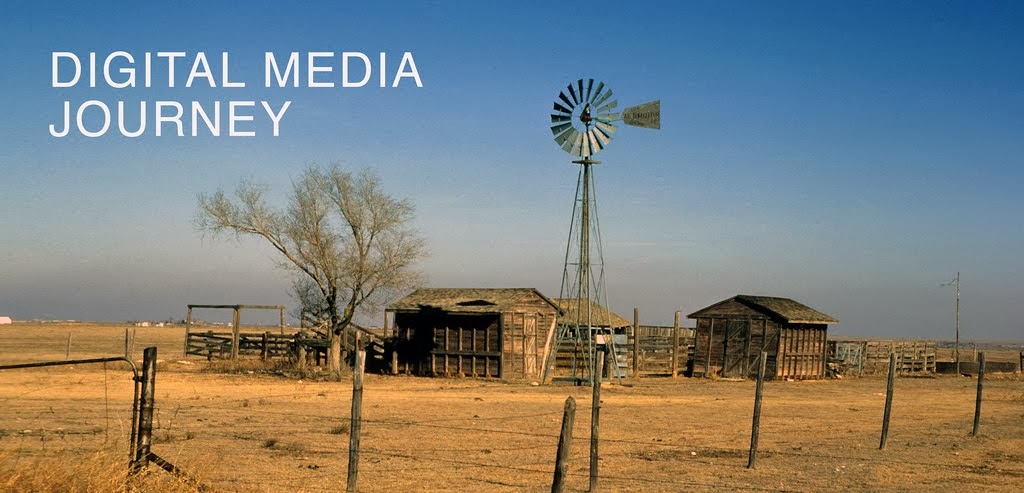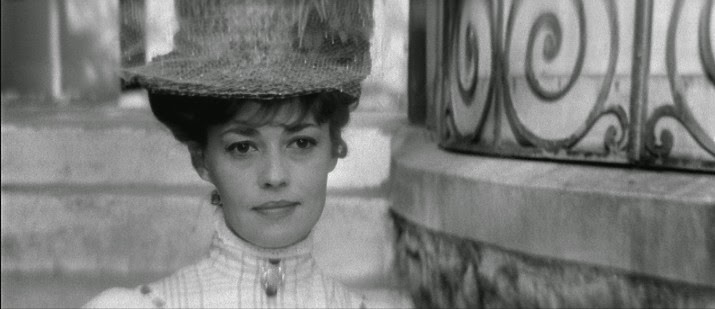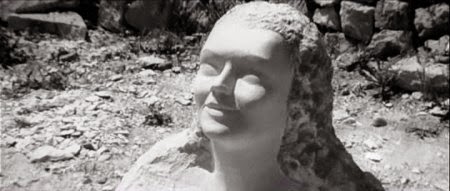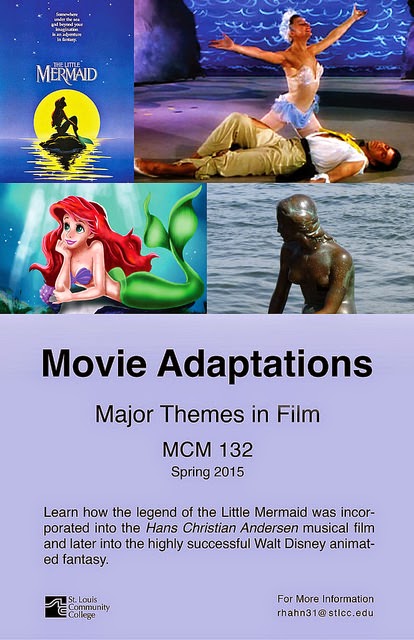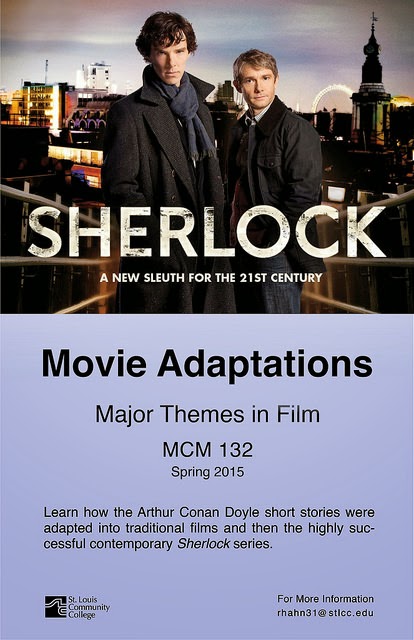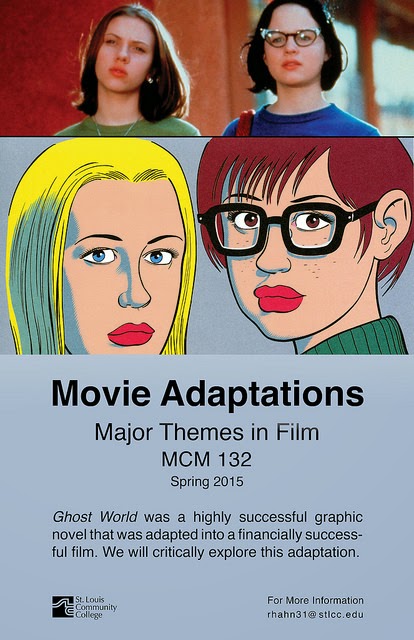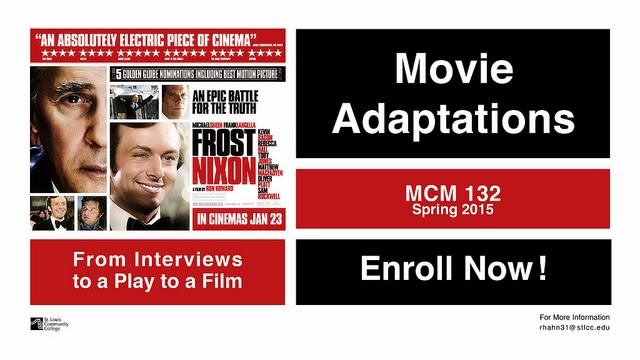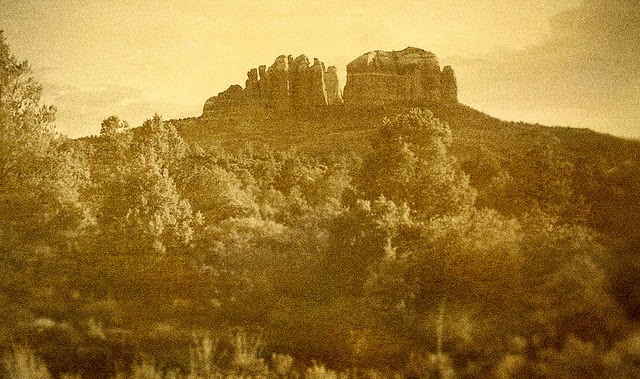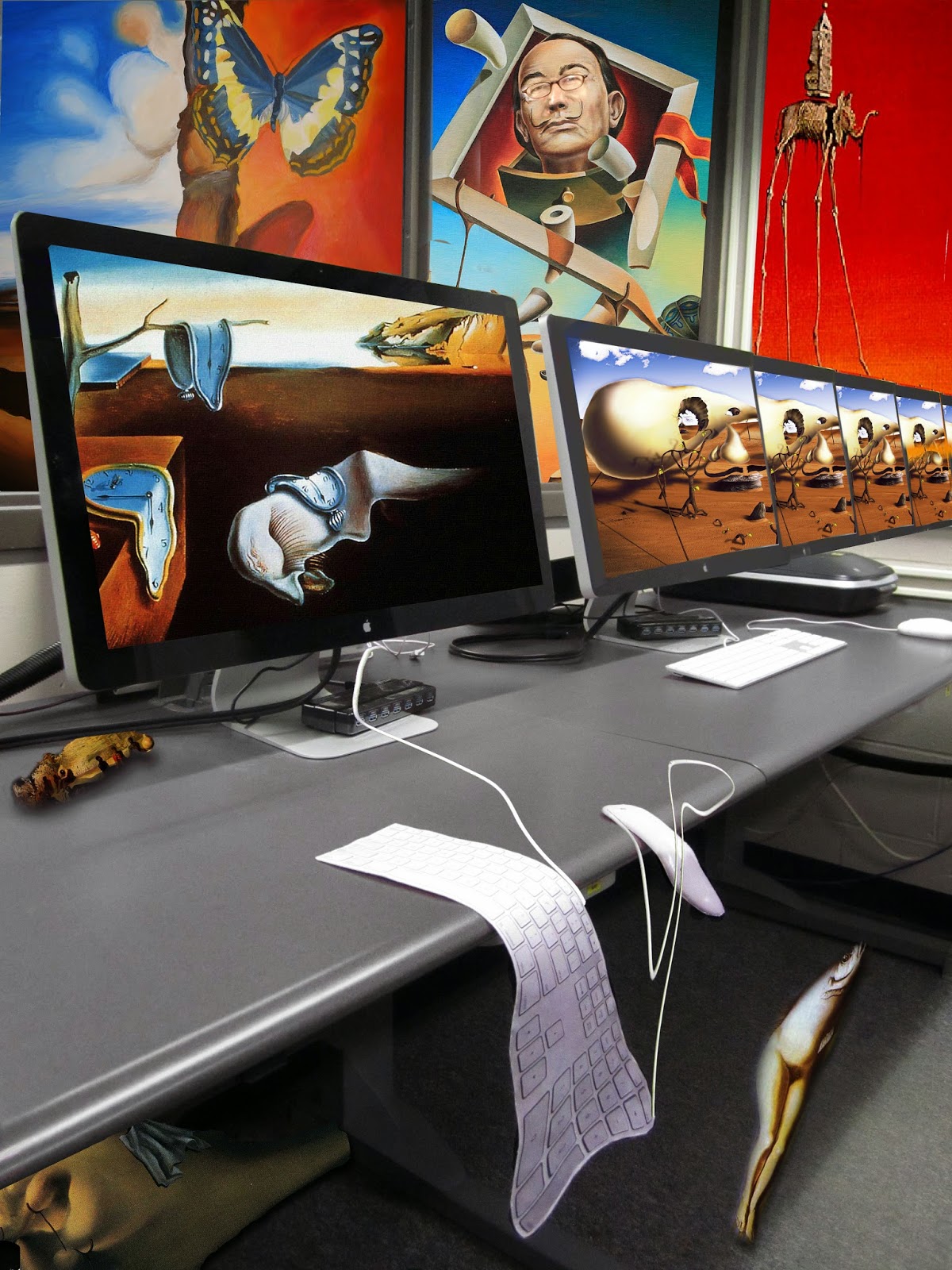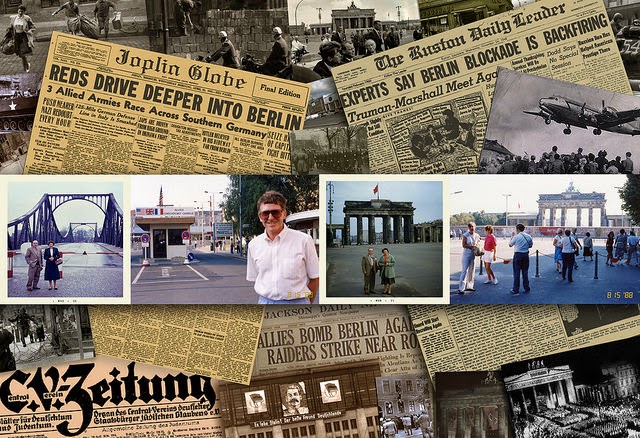Jules and Jim (1962), François Truffaut's third film has a plethora of cinematic techniques typical of the Nouvelle Vague, that years later Truffaut said he found embarrassing. He especially felt that the panning shots were too fast and noticeable. His later films cinematically were more reserved and visually similar to most Hollywood films
Albert, an artist
shows Jules and Jim lantern slides of ancient statues. At first the slides are
shown slowly and we see Albert load the slides into a turn of the Century
projector. We are aware of how much time is necessary to load and pull each
slide in front of the lamp. After the slide appears on the screen there is a
lateral oscillation of the image before it stops moving. This gentle
oscillation will become more pronounced when they visit the statue.
(Albert Speaking)
I like this one very much.
It has beautiful lips.
A bit scornful.
Beautiful eyes, too.
A rapid succession
of slides appear on Albert’s linen screen… an extreme close-up, a
profile, and images of her nose and mouth. It is impossible for his lantern to
project the slides that fast. The rapid editing has disrupted the movie. The
voice over narration provides their reaction.
The tranquil smile on the crudely
sculpted face mesmerized them.
In the next scene
Jules and Jim are descending an outdoor stairway to see the statue at an
outdoor museum on an Adriatic island. The camera pans around the garden looking
for the statue. The panning is done in silence.
They spent an hour by the statue.
It exceeded their expectations.
After the camera finds the statue that they are searching
for, the simple panning becomes more complicated as will Jules and Jim’s lives after
they become involved with Catherine. There is a tracking-zoom shot where the
statue appears closer while the background recedes. Next is a
track to the right with a pan to the left to keep the statue in center screen
as we view more of the left side of her face. The process reverses from a
different starting point so we can see the right side of her face. The voice
over describes the camera movement, the silence, and their reaction to her
smile.
They walked rapidly around it in
silence.
They didn’t speak of it to the next
day.
Had they ever met such a smile?
Never.
And if they ever met it, they’d
follow it.
Jules and Jim returned home full of
this revelation.
Jules has
arranged for three girls to have an outdoor dinner with them. The first detail
the narrator provides is about Catherine’s smile.
Catherine, the French girl, had the
smile of the statue on the island.
Her nose, mouth, chin, and forehead bore
the nobility of a province she personified as a child in a religious ceremony. It
started like a dream.
When Catherine
first appears on screen, she is visually linked to the statue with similar
excited camera movements and editing. She descends outdoor steps just like
Jules and Jim descended outdoor steps to get to the outdoor statues. There also
is silence as she starts her descent and her face gets closer to the camera.
After she lifts her veil to reveal her face there are quick cuts, some with
fast zooms, of alternating profiles and full-face close-ups. She becomes an
incarnation of Jules and Jim’s objet d’art.
During the
dinner there is a reduced sized frame that is not wide screen, of a medium
close up of Jules and Catherine sipping wine.
A shy, happy smile played on
Jules lips and told the others he held them in his heart.
The
theme of smiling recurs when Jules and Jim are playing dominoes and Catherine
feels she is being ignored.
I believe I
just said something funny. In any case amusing. You might at least smile… I
never laughed before I met you two. I always looked like this.
She
then makes several poses with sad faces that are freeze-framed.
But that’s
over for good. Now it’s like this.
She
then makes smiling poses that are freeze- framed. Jules and Jim want to
remember Catherine as the statue but real life doesn’t allow time to stop. The
camera allows us to see what Jules and Jim desire.
After
a race through a pedestrian overpass that Catherine won by cheating with a head
start, the narrator provides information about their relationship.
Jim considered
her to be Jules’ and didn’t try to form a clear picture of her. Catherine once
again wore that calm smile. It came naturally to her and expressed everything
about her.
After they saw a
play and they are walking along the Seine, Catherine becomes upset that the men
are talking about the play and ignoring her. Jules’ opinion that the most
important factor in a couple is the fidelity of the woman intensifies her
anger. She wants to be like the heroine in the play “who invents her whole life
at every moment.” She protests and jumps
in the Seine. After she is in the cab, the narrator provides the interpretation
for the viewer.
Jules was pale,
silent, unsure of himself, and more handsome.
Catherine wore her same smile, like a
modest general after his first brilliant campaign
After the war
there is only one mention of Catherine’s smile.
It is late in the film after tensions
between Jim and
Catherine arise because of their inability to have a child, Jim’s previous
absence from Catherine, her pregnancy that Jim believes is Albert’s, and her
miscarriage. She became severely depressed. Jim goes to visit Jules and
Catherine at their house on the Seine. As they are preparing for an outing the
narrator comments about the sincerity of her smile.
Catherine was smiling, but she had a look of intrigue about her.
Catherine was smiling, but she had a look of intrigue about her.
The
voice over describes the camera movement, the silence, and their reaction to
her smile. Her behavior becomes erratic as
she drives her car around the sidewalk. In a bedroom scene, when Jim tells her
he will marry Giberte, she feigns a smile before she starts crying, goes into a
rage and takes a pistol to attempt to kill Jim. Albert’s initial description of
the statues lips as “A bit scornful” has become one major understatement.
The
Belle Époque when the three first met was disrupted by the First World War. A new
horror is on the horizon. Nazi book burning is shown in a newsreel that they
are watching. Could the trio live through the coming horror? Catherine kills herself and Jim as she drives
her car from a bridge while Jules is nearby watching.
